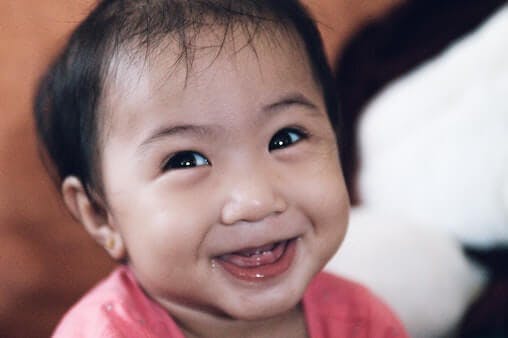Baby Teeth

Question
My child has no teeth, he is 9 months old. Is there a problem that I should get checked out? I worry about this because he has been so early at all the other developmental stages.
Dana Martin - Indiana
Dr. Greene's Answer
For an infant, the mouth is an exquisitely sensitive portal connecting the world around him to his developing mind and body. He uses his mouth to meet his mother, to sate his constant hunger, to comfort himself between feedings, and to explore objects in the widening world around him. When hard teeth begin protruding into this soft, sensitive orifice, it is a major event in the life of an infant.
Many parents worry about the timing of the appearance of their children’s teeth. While the average time for the appearance of the first teeth is between five and seven months of age, there is a wide normal variation of timing. The teeth might come in as early as one month of age, or they might wait until a child is almost one-and-a-half-years old. Anywhere in this range can be normal.
Generally lower teeth come in before upper teeth, and generally girls’ teeth erupt earlier than those of boys (much like with everything else). Delayed eruption of all teeth may be the result of a nutritional problem, such as rickets, or a systemic condition, such as hypopituitarism or hypothyroidism.
Natal teeth or teeth present at birth are found in about one out of two thousand newborn infants. These are often extra teeth, but this should be confirmed radiographically before any attempt is made to remove them. Natal teeth may cause pain to the infant, poor feeding, and, if the baby is nursing, maternal discomfort. Natal teeth may also cause damage or even amputation of the tip of the newborn’s tongue due to strong sucking behavior. Early appearance of all teeth may indicate a hormonal problem such as hyperthyroidism.
The following tables outline the most common ranges for teeth to erupt and to shed:
Eruption of Primary or Deciduous Teeth
| Upper | Lower | |
|---|---|---|
| Central incisors | 6-8 months | 5-7 months |
| Lateral incisors | 8-11 months | 7-10 months |
| Cuspids (canines) | 16-20 months | 16-20 months |
| First molars | 10-16 months | 10-16 months |
| Second molars | 20-30 months | 20-30 months |
Shedding of Primary or Deciduous Teeth
| Upper | Lower | |
|---|---|---|
| Central incisors | 7-8 years | 6-7 years |
| Lateral incisors | 8-9 years | 7-8 years |
| Cuspids (canines) | 11-12 years | 9-11 years |
| First molars | 10-11 years | 10-12 years |
| Second molars | 10-12 years | 11-13 years |
Eruption of Permanent Teeth
| Upper | Lower | |
|---|---|---|
| Central incisors | 7-8 years | 6-7 years |
| Lateral incisors | 8-9 years | 7-8 years |
| Cuspids (canines) | 11-12 years | 9-11 years |
| First premolars (bicuspids) | 10-11 years | 10-12-years |
| Second premolars (bicuspids) | 10-12 years | 11-13 years |
| First molars | 6-7 years | 6-7 years |
| Second molars | 12-13 years | 12-13 years |
| Third molars (wisdom teeth) | 17-22 years | 17-22 years |
(Adapted from chart prepared by PK Losch, Harvard School of Dental Medicine, from Nelson’s Textbook of Pediatrics.)
If a permanent tooth becomes visible before the primary tooth above it has fallen out, generally the primary tooth should be extracted.
I hope that gives you enough to chew on!


